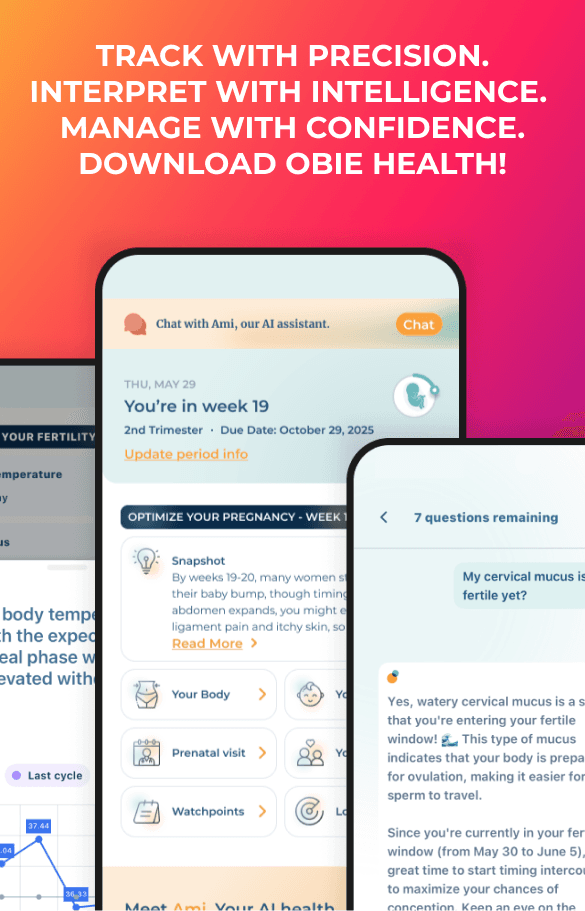Why Would You Need a Cesarean Section?
Cesarean Delivery
Obie Editorial Team

A cesarean section, commonly known as C-section, is a surgical procedure used to deliver a baby. This procedure involves making an incision through the mother's abdominal wall and uterus to safely bring the baby into the world. It is important to arm you with vital information on the reasons a C-section might be considered. Understanding these indications is key to feeling confident and informed about your childbirth options.
Before Labor
- If you've previously had a cesarean delivery and prefer not to undergo labor again, a repeat cesarean might be your choice.
- A previous cesarean with a vertical (up-and-down) incision in the uterus or any major uterine surgery could necessitate another C-section, as they present more risks during a vaginal birth.
- Placenta previa, where the placenta covers the cervix, is another condition which could indicate the need for a C-section to prevent labor complications.
- When the baby is breech—meaning they are positioned feet-first—or lying sideways (transverse), a C-section might be the safest option for delivery.
- If the baby appears to be larger than average, a C-section might be suggested for safety, though many individuals can deliver larger babies vaginally.
- A C-section may also be considered if prenatal evaluations suggest the baby cannot endure the rigors of labor.
- If you're expecting triplets or more, a C-section is often the recommended option for safe delivery, although it varies with individual health factors and obstetrical discussions.
- Medical conditions that make labor unsustainable—like certain heart or respiratory disorders—can indicate the need for a C-section.
- Physical obstructions in the birth canal, such as fibroids or ovarian tumors, may necessitate a cesarean delivery.
- Infections such as herpes or HIV could lead to a recommendation for a C-section to prevent transmission to your baby during labor.
During Labor
- If there are signs of fetal compromise—if your baby shows distress or abnormal heart rate patterns—a prompt decision for a C-section can safeguard your baby's wellbeing.
- Sometimes, complications like abruptio placentae (premature detachment of the placenta) or conditions like preeclampsia may arise, requiring quick action via a C-section.
- If labor progresses and the baby is found not to fit through the mother's pelvis, this situation, known as cephalopelvic disproportion (CPD), might necessitate a C-section to ensure a safe delivery for both you and your baby.
These may sound daunting, but rest assured, you're not alone. Being informed allows you to have insightful conversations with your healthcare team and formulate a delivery plan that prioritizes safety and peace of mind. We are here to support you and your partner every step of the way.







